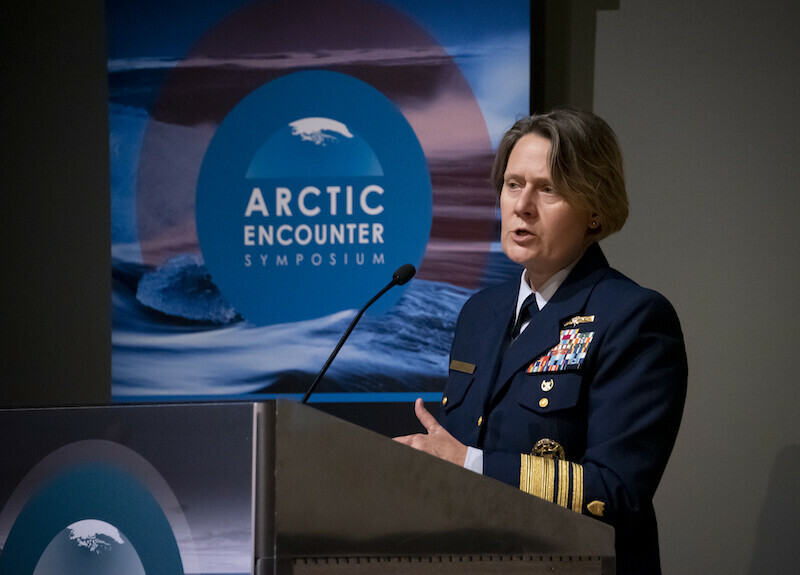Adm. Linda Fagan has told Congress that transforming the Coast Guard’s workforce, including attracting new talent in a tight job market, are her highest priorities as the new commandant of the Coast Guard.
In her first appearance recently before the House Coast Guard and Maritime Transportation subcommittee, Fagan laid out how the service under her leadership will tackle the challenges of recruiting and retaining the current 57,000 civilian and military workforce.
She said that she is committed “to providing our people innovative tools, inclusive policies, trustworthy technology, modernized training and exceptional support to meet the demands of today and tomorrow.”
The service’s personnel system has not been significantly changed in 75 years, and adaptations must be made to meet a new set of employee expectations for their professional lives, she told the July 27 hearing. “We must adjust the way we recruit, train and retain our people to continue to be an employer of choice.”
The admiral said that like other military services, the Coast Guard is recruiting at a time when “fewer young people are qualified and interested in military service than in the past. Additionally, Covid-19 affected the Coast Guard’s ability to conduct in-person recruiting, weakening historical community partnerships. Our service is now competing for talent in a post-pandemic job market with historically low unemployment rates, where even entry-level jobs offer benefits similar to the military, including signing bonuses, referral bonuses, 401(k) retirement plans and medical benefits.”
Adm. Fagan said the service has undertaken a strategic plan to implement a number of new initiatives to make the Coast Guard an attractive place to join as a career and to stay in the long term. This includes actions to make the service more inclusive, identify and respond to biases, and continue to create an inclusive and diverse workplace and culture.
Based on recommendations from outside experts, Adm. Fagan said the Coast Guard has revised some of its requirements, such adopting new uniform, tattoo and grooming standards, offering flexible assignment policies to help dual military families relocate together and a new body composition program.
“These improvements are already paying dividends for our workforce and mission execution. More women are remaining in our service. Today there are 28 percent more women serving at the critically important midgrade leadership ranks than there were in 2017,” she said, adding that the Coast Guard Academy class of 2026 is 43% female and 37% underrepresented minorities.
To help enlisted workers, the Coast Guard has launched a new career management branch that offers personalized support to help them develop career paths, and a similar advising service is now operating for civilians.
“Our diverse workforce is the heartbeat of our service, and we must ensure they are valued, respected and rewarded for their hard work. Our people and their diverse talents, skills and interests facilitate success across the missions,” said Fagan.
The Coast Guard is also modernizing the delivery of its training programs that reflect new technology and mission demands that require even experienced operators to receive regular skill upgrades.
Also important, the admiral said, is providing housing, healthcare and childcare to ensure that service members can focus on their demanding responsibilities. Initiatives include assignments that allow co-location of dual military families, expanded parental leave policy and a program to allow Coast Guard Reservists to backfill for active-duty members on prenatal, maternity, convalescent and primary caregiver leave. Healthcare improvements will allow for expanded access to telehealth, online appointment scheduling and improving access to dental, care, physical therapy and mental health services. Access will be expanded for childcare options and professional development opportunities, including increased tuition assistance for uniformed members pursuing off-duty education.
“All of these programs make the service easier for those who want to serve the nation, but also serve their families,” she said.
For those wanting to transition to work outside the Coast Guard, a Credentialing Opportunities Online program helps workers earn professional credentials based on their Coast Guard experiences. As members transition to civilian jobs, they can now spend their last six months training with a civilian business while remaining on active duty. “The ability to translate Coast Guard experience to the civilian workforce makes the service more attractive to potential recruits,” the admiral said.
Additionally, the Coast Guard has expanded access to sexual assault prevention response and recovery services to family members and former employees and provides legal representation to eligible individuals to help victims understand their rights and options through the military justice system.
The Coast Guard is reforming its approach to prosecuting sexual assault, domestic violence and related crimes, Adm. Fagan said, and its policy on anti-hate and harassment includes a process for investigations and to promote a workplace free of bullying and harassment “through transparency and accountability.”





.jpg.small.400x400.jpg)